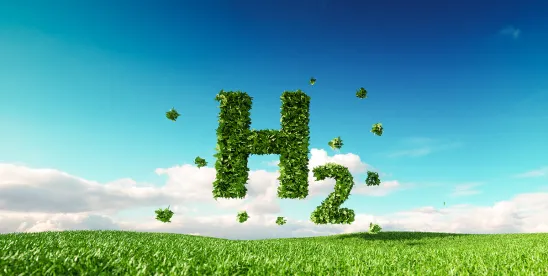There is a lot of buzz around clean technology, distributed energy resources (DERs), microgrids, and other technological innovations in the renewable energy and clean transport industries and how these developments can contribute to solving longstanding environmental justice issues. As these innovations develop, energy markets will undergo substantial changes to which consumers and industry participants alike will need to adapt and leverage.
DEPARTMENT OF ENERGY ANNOUNCES THE CREATION OF THE INTERCONNECTION INNOVATION E-XCHANGE
On 31 May 2022, the U.S. Department of Energy (DOE) launched a joint partnership called the Interconnection Innovation e-Xchange (i2X) in an effort to create a more streamlined process for interconnecting renewable energy sources into the grid. The partnership will be led by DOE’s Wind Energy Technologies Office and Solar Energy Technologies Office, with additional backing by Pacific Northwest National Laboratory, National Renewable Energy Laboratory, and Lawrence Berkeley National Laboratory.
The i2X program was born out of an interest in addressing two problems: First, DOE concluded in its recent Solar Futures Study that current rules, costs, and procedures for connecting to the grid cannot handle the rapid increase in clean energy projects that are needed to meet President Biden’s clean energy goals. Second, interconnection queue waiting times are already inefficient and expected to get worse. The i2X initiative seeks to address those problems by providing technical assistance to address the lack of data, shortage of human resources, and more complicated grid impact assessments.
The hope of the i2X’s program is that interconnecting more renewable sources to the grid will lower costs to consumers, address inequities caused by burdensome interconnection processes, help meet President Biden’s clean energy goals, and bring together all corners of the energy industry. Specifically, the i2X initiative is expected to garner a collective movement from grid operators, utilities, state and tribal governments, clean energy developers, energy justice organizations, and other power stakeholders—all of whom are necessary players in the move toward a clean energy economy.
NEW LEGISLATION EXPANDS NEW YORK POWER AUTHORITY’S ABILITY TO PURCHASE, CONSTRUCT, AND OPERATE RENEWABLE ENERGY PROJECTS
On 1 June 2022, the New York Senate passed Senate Bill S6453C, which implements the “New York State Build Public Renewables Act” (the Act) by granting authority to the New York Power Authority (NYPA) to own and build new renewable energy generation, storage, and transmission projects at scale. To date, the majority of NYPA’s electricity supply has been produced from hydropower projects. Prior to the Act, NYPA was only authorized to build or own a small number of new renewable energy projects. The Act requires NYPA to retire its fossil fuel-powered generating fleet by 2030 and generate only renewable energy thereafter. The Act further requires that NYPA will be the sole provider of electricity to all state and municipal owned, leased, controlled, or operated buildings by 2030 and 2035, respectively. Additionally, the Act authorizes NYPA to sell renewable energy to residential customers and Community Choice Aggregation communities, prioritizing low-to-moderate income customers.
The Act nests within New York’s climate goals adopted in the Climate Leadership and Community Protection Act that was signed into law on 18 July 2019. These new goals require New York to reduce economy-wide greenhouse gas emissions 40% by 2030 and at least 85% by 2050 from 1990 levels.
NATIONAL RENEWABLE ENERGY LABORATORY DEVELOPS AFFORDABLE PATHWAY FOR HYDROGEN GENERATION
Federal researchers at the National Renewable Energy Laboratory (NREL) recently published a new production path for hydrogen through the use of direct solar thermochemical hydrogen (STCH). The STCH production, developed by NREL, creates hydrogen at a cost of US$2.50 per kg without a carbon footprint—nearly half the price of hydrogen production process via electrolysis.
STCH utilizes concentrated solar power reflected and refracted by a field of mirrors into a single receiver. The high heat generated from the concentrated sunbeams can split hydrogen from water. Because STCH is emission free and the mirrors are extremely efficient at capturing sunlight, this process is extraordinarily cheaper than more common green hydrogen production via solar panels or wind power.
NREL’s discovery fits within the DOE’s Hydrogen Energy Earth-Shot Program (Earth Shot) designed to accelerate breakthroughs of abundant, affordable, and reliable clean energy solutions by 2031. In particular, Earth Shot looks to reduce the cost of clean hydrogen to US$1 per kg by 2031 (from its current record prices between US$5 and US$6 per kg). If able to be replicated at a larger scale, STCH may be a large step towards reaching that goal.
David Wang also authored this article






 />i
/>i
